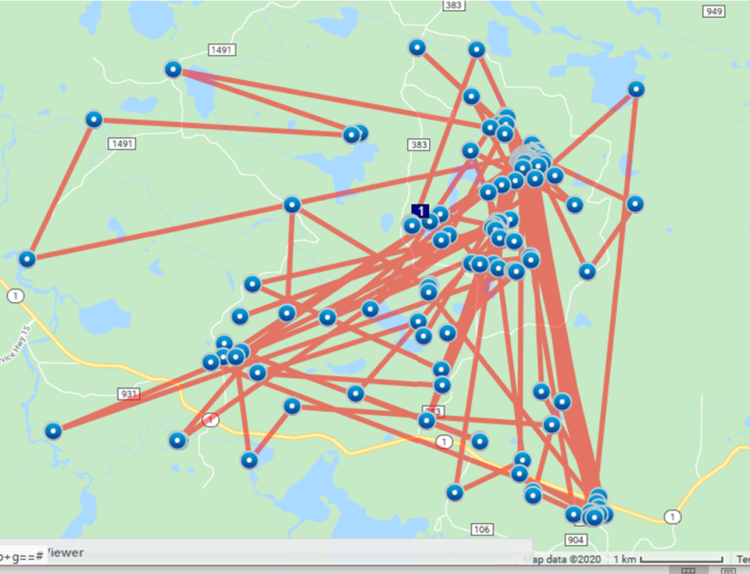As part of a broader trial of noninvasive methods to research wild wolves (Canis lupus) in the Superior National Forest (SNF), Minnesota, the USGS Wolf and Deer Project (Northern Prairie Wildlife Research Center) explored whether wolves could be remotely monitored using a new, inexpensive (approximately $80 USD in 2019), remotely deployable, passive acoustic recording device. In collaboration with researchers from Spain and the International Wolf Center (IWC), the research team tested the efficacy of the devices in detecting wolf howls and factors influencing detection by placing them at set distances from the IWC captive wolf packs and compared those recordings with real‐time, on‐site howling data during summer 2019. The devices were also used as part of a National Geographic–funded project during summer 2019 to monitor wild-wolf summer homesites (as determined by Global Positioning System [GPS] locations from the breeding female’s radiocollar) in a collaborative study with researchers from Spain, India, and Yellowstone National Park. During winter 2020, researchers documented the breeding season howling rate of captive wolves at the IWC and at a wolf center in Spain. During summer 2021, the team studied features of sled dog vocalizations and how they differ from wolf choruses, as these domestic dog vocalizations frequently appeared in the audiofiles from the summer 2019 wild wolf research in the SNF. Overall, results confirmed that the devices can be used to monitor howling rates, confirmation of reproduction, and potentially the number of wolves in the pack. The devices may be most useful in studying specific sites during periods when wolves move less frequently (e.g., during late spring and summer at homesites or potentially during winter at kill sites of very large prey) and in a passive sampling array (e.g., occupancy studies), especially when used in concert with other methods such as camera‐trapping. The devices were also useful for documenting interspecies acoustic interactions.
https://doi.org/10.1002/wsb.1117

Photo of an acoustic sensor device deployed on a tree in the Superior National Forest, Minnesota.

A female GPS-collared wolf’s summer movements indicating homesite areas by frequent locations. Top of map is oriented north.

